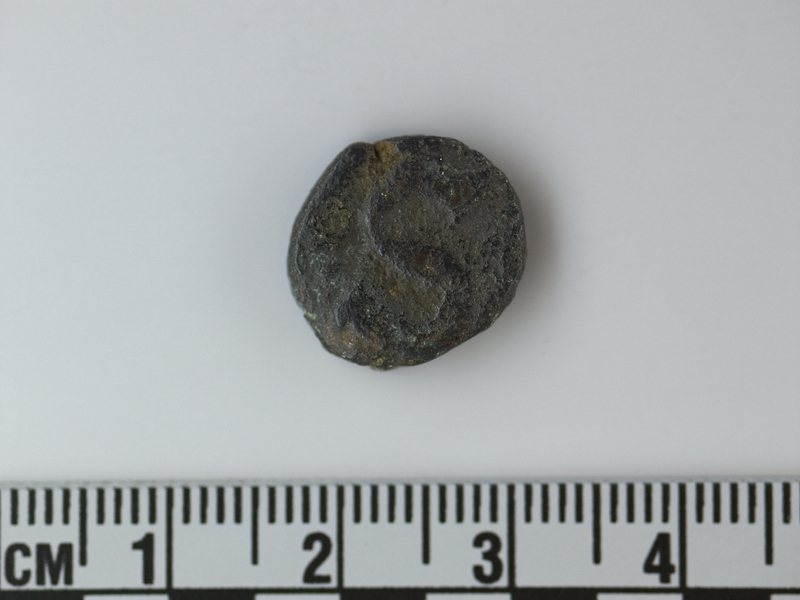Coin Item Number: 3095/1000 from the MOA: University of British Columbia


Description
Byzantine coin of Heraclius, 610-641. Obverse: cross potent above two steps; inscriptions are illegible. Reverse: large ‘S’.
History Of Use
“6 nummi” (denomination); DO# 198; Sear# 862. This type of coin, the follis, is a large bronze coin that was introduced by the Emperor Anastasius in 498, marking a large departure from the Roman system of coinage inherited by the Byzantine Empire. It was the model for bronze Byzantine coinage for 200 years, facilitating small-scale trade and commerce. Originally, the basic follis in Constantinople was a heavy coin worth 40 nummia, with smaller follis parts equaling 20, 10, or 5 nummia. When the coin was debased and made lighter the value of it would decrease. Each provincial mints had their own divisions. In Alexandria the mint continuously produced follis parts worth 12, 6, and 3 nummia, until the province was lost to the Arab conquests. The 6 nummia coin made up a minor part of the local currency, circulating only within Egypt.
Iconographic Meaning
The Christian cross on the reverse of the coin was introduced to Byzantine coinage in the 5th century. It emphasized the Christian nature of both the emperor and the empire.
Item History
- Made in Alexandria, Egypt between 613 and 618
- Owned by David Herman before February 2, 2015
- Received from David Herman (Donor) on February 2, 2015
What
- Name
- Coin
- Identification Number
- 3095/1000
- Type of Item
- coin
- Material
- bronze metal
- Overall
- height 0.2 cm, diameter 1.4 cm
Who
- Culture
- Byzantine
- Previous Owner
- David Herman
- Received from
- David Herman (Donor)
Where
- Holding Institution
- MOA: University of British Columbia
- Made in
- Alexandria, Egypt
When
- Creation Date
- between 613 and 618
- Ownership Date
- before February 2, 2015
- Acquisition Date
- on February 2, 2015
Other
- Item Classes
- metalwork
- Condition
- fair
- Accession Number
- 3095/1000